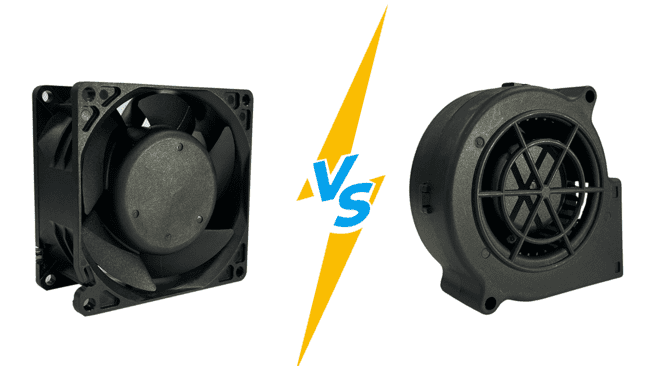Are you tired of sifting through countless articles trying to figure out the best bearing for your DC Fan? Ever wondered if there’s a clear winner among normal sleeve bearings and ball bearings? Buckle up, because we’re about to dive deep into the world of fan bearings!
In this blog post, we’ll break down the key differences between Sleeve and Ball bearings and that helps you to decide which one reigns supreme for your specific application.
Ready to become a DC fan bearing expert? Let’s get started!
Bearing Types for DC Fans
Prior to analyzing pros and cons between sleeve bearings and ball bearings, you need to recognize what bearings readily available for DC fan production and its working principles.
The bearing types of Brushless DC Fan is mainly devided into three types: sleeve bearings, ball bearings and FDB Bearings (Fluid Dynamic Bearing).
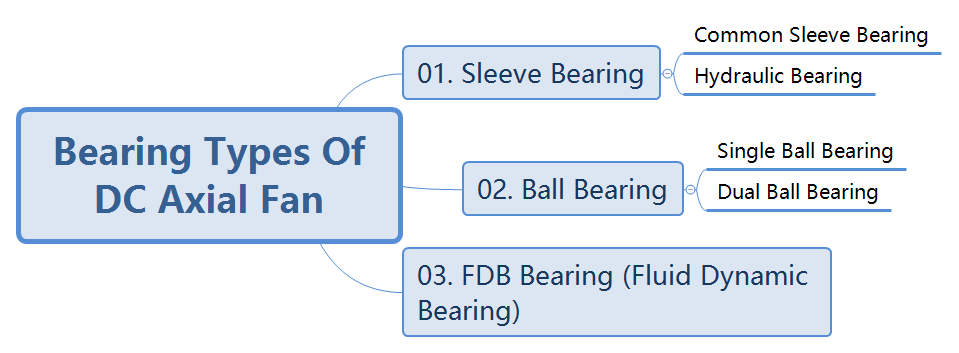
Sleeve Bearing
Sleeve bearing is a sintered body made from copper and iron powder through metallurgy, which is originally a porous bearing with internal lubricating oil storage holes.
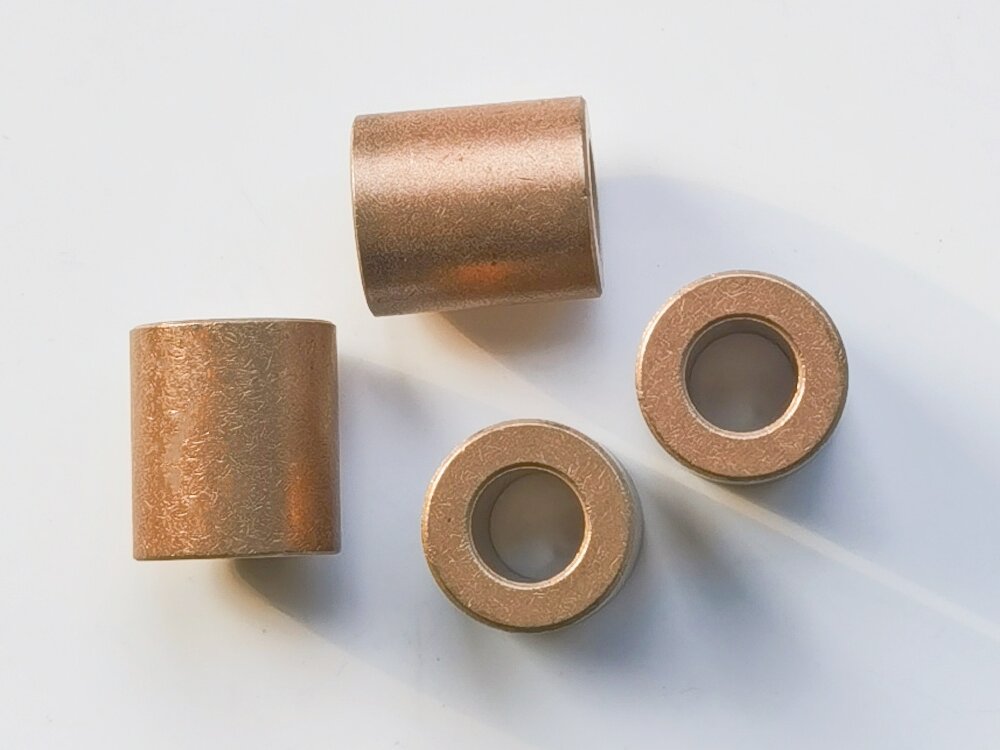
Hydraulic bearing, at CCHV, we also call Rifle Bearing, is improved type on the basis of common sleeve bearing. Hydraulic bearings get a unique cycle design of the loop-back lubricating oil supply than common sleeve bearings.
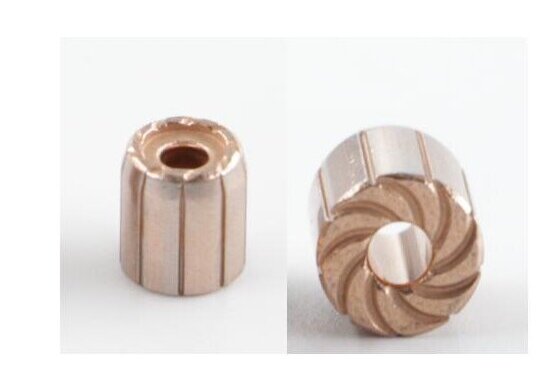
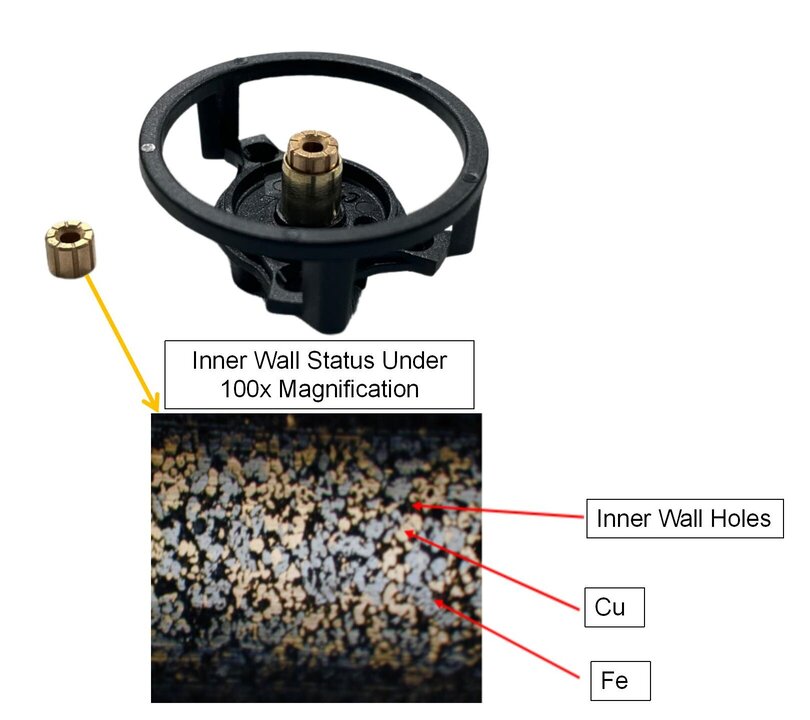
Refer to the following picture and you will come to know how the lubricating oil goes through the grooves circularly, developing the loop-back cycle in hydraulic bearing, which helps to reduce the oil leakage comparing to common sleeve type.

At CCHV, we not only optimize lubricating oil storage design on bearing, but also upgrade our frame design with sealed gap to prevent oil leakage (shown as following picture).
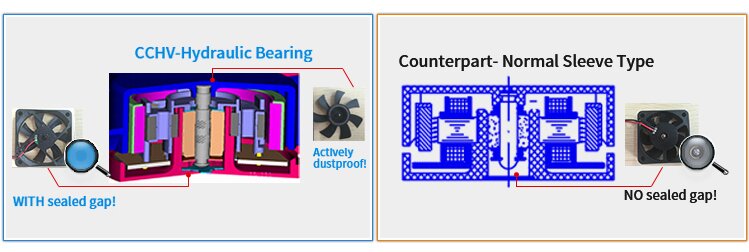

Ball Bearing
Dual Ball bearing is used in the form of rolling friction with two rows of ball bearings. There are several tiny steel balls in the bearings around the shaft. When the fan impeller or the shaft rotates, the steel balls will rotate accordingly. Because they are all balls, the friction force is small, and there is no problem of lubricating oil leakage comparing to common sleeve bearing.
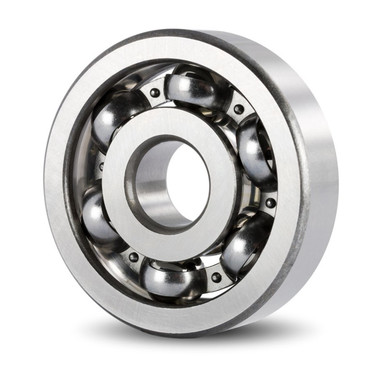
Single Ball bearing is consist of one piece of Ball Bearing+ one pieces of Sleeve Bearing, which was regarded as compromising proposal between sleeve bearing and dual ball bearing on cost and noise points of view. However, due to unstable operation, single ball bearing fan is not pupolar in the market. Therefore, we don’t focus on it in this post.
FDB Bearing (Fluid Dynamic Bearing)
Fluid Dynamic Bearing is made of pure copper material and proccessed by the lathe turning. Therefore, there are the turning chutes inside in order to increase the pressure and contribute to shaft rotation.

Working principle of FDB bearing: The groove in the bearing can guide the lubricating oil to move and form the maximum pressure at the sharp point (the red area in the following picture), which will support the shaft rotation from the fan impeller.

However, FDB bearing is rarely used in the market due to high cost. Therefore, here we only focus on the thorough comparison between sleeve bearing and dual ball bearing.
The pros and cons between Sleeve bearing and Ball Bearing
From the above content, you should get a rough picture of the bearing materials and working pricinples. Next, I will analyze from the following angles to offer you better understanding of the pros and cons between sleeve bearing and dual ball bearing.
- Fan Lifespan
- Fan Noise
- Fan Mounting
- Friction
- Lubricant
- Cost
Fan Lifespan
Fan lifespan is the most fundemental difference between hydraulic bearing and duall ball bearing. The following chart uses the L10 method to illustrate fan performance at various temperatures.
L10 refers to the point of time at which 90 percent of tested fan can continue to work.
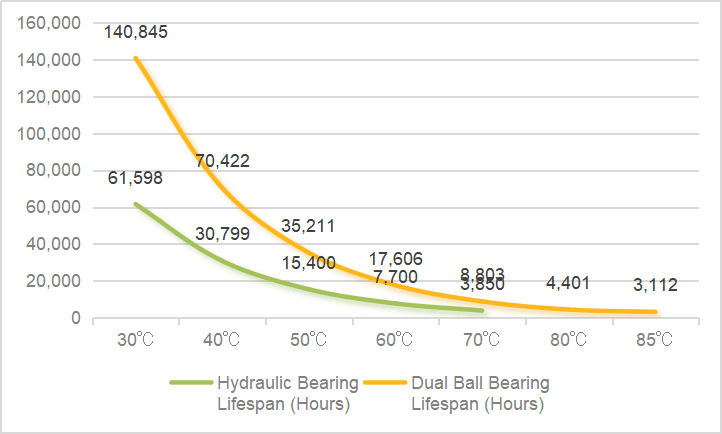
From the chart, you can see lifespan of ball bearing fan is twice at least than hydraulic bearing fan at different operating temperatures.
The fan lifespan is shorten by almost 50% when the temperature increases by 10℃.
That is the reason why we normally define the fan lifespan in specification based on certain temperature and humidity, saying 40℃ and 65% RH.
When the operating temperature exceeds 70℃, the hydraulic bearing is not feasible. If your system generates high levels of the heat, and you want to get more reliable fan with longer lifespan, dual ball bearing fan will be the best option.
Fan Noise
In the pass, it was though that sleeve bearing fan ran more quitely than ball bearing fan. That is true but when the fan works at pretty low speed.
The sleeve bearing fan noise level depends on the clearance and friction between shaft and bearing. As the lubricating oil continues to evaporate, the noise will increase as the fan runnning time become longer.
With the innovation of technology, ball bearing fan can run as quite as sleeve bearing, especially at the high speed.
We tested the fan noise with sleeve bearing and ball bearing bearing for the same fan on different speeds for a more intuitive comparison:
| 60x60x25mm Fan Series C | Sleeve Bearing Fan (1 Meter dBA) | Ball Bearing Fan (1 Meter dBA) | Difference (1 Meter dBA) |
| 2600RPM | 19.10 | 20.80 | 1.7 |
| 3200RPM | 25 | 26.10 | 1.1 |
| 4400RPM | 34.80 | 35.60 | 0.8 |
| 5200RPM | 38.40 | 39.10 | 0.7 |
From the above chart, you can see when 60x25mm fan works at 2600RPM low speed, the noise of difference between sleeve bearing and ball bearing is about 2dBA, however, with the fan speed going up, the noise gap become smaller and smaller. And it is certain that noise of sleeve bearing fan and ball bearing fan will stand at the same level when the fan works at a high speed.
Therefore, it is imcomplete understanding that sleeve bearing fan works quiter than ball bearing fan. When the fan works under pretty high speed, sleeve bearing fan doesn’t get any advantage on noise issue.
Fan Mounting
Fan mounting is another factor which will effect the fan lifespan, or even cause fan failure.
Fan with all types bearing can be installed horizontally with impeller upward and vertically against the plane.
Hydraulic bearing fan can also be installed with -5 ° to 5 ° angle between frame and vertical plane, which normally happens for refrigerator DC centrifugal fan assembly.
Impeller downward installation is NOT feasible for any type of sleeve bearing fan, only for ball bearing fan.
| Available For: Common Sleeve Bearing Fan Hydraulic Bearing Fan Dual Ball Bearing Fan | Available For: Common Sleeve Bearing Fan Hydraulic Bearing Fan Dual Ball Bearing Fan | Available For: Hydraulic Bearing Fan Dual Ball Bearing Fan | Only For Ball Bearing |
 |  |  |  Or Any Other Types of Installations |
Friction
Sleeve Bearing: The impeller shaft of the sleeve bearing fan is wrapped in a sleeve-like structure and is added with lubricating oil for easy rotation, which is a type of line contact, saying the contact surface area between its moving parts is actually quite large. Since the sleeve bearing gets more friction between shaft and bearing inner wall, they need lubricanting oil to reduce the frictions.
Ball bearing fan is designed with a ring of balls around the shaft, which is a type of point contact for less friction. The design of ball bearings reduces friction by replacing sliding motion with rolling motion. Instead of two surfaces rubbing against each other, the balls roll between the races, creating less friction and reducing wear on the bearing. The races are also typically machined to precise tolerances to ensure proper fit and alignment, further reducing friction and increasing efficiency.
Lubricant
When it comes to lubrication, sleeve bearings and ball bearings have distinct differences. Sleeve bearings typically require more frequent lubrication, as they rely on a thin layer of oil to reduce friction and prevent wear on the bearing.
In contrast, ball bearings require less frequent lubrication, as the rolling motion of the balls reduces friction and wear. However, ball bearings still require some lubrication to prevent corrosion and ensure smooth operation.
Grease is often used to lubricate ball bearings, as it can provide better protection against contamination and extend the lifespan of the bearing.
Cost
Sleeve bearings are much less expensive than ball bearings. This is because sleeve bearings have simpler designs and require less precision in their manufacturing.
However, the trade-off for this lower cost is often reduced durability and lifespan, as sleeve bearings can wear out and fail more quickly than ball bearings.
Ball bearings, on the other hand, are typically much more expensive than sleeve bearings due to their more complex design and higher manufacturing costs.
However, they offer longer lifespans and higher reliablity, which can ultimately result in cost savings in the long run.
Additionally, the improved efficiency of ball bearings can lead to reduced energy costs over time.
Overall, the cost differences between sleeve bearings and ball bearings will depend on the specific application and the level of performance required.
While sleeve bearings may be more cost-effective upfront, they may not offer the same level of reliability and lifespan as ball bearings.
Therefore, it is important to carefully consider the cost-benefit analysis when choosing between sleeve and ball bearings for a particular fan application.
| Criteria | Common Sleeve Bearing | Hydraulic/Rifle Bearing | Dual Ball Bearing |
| Fan Lifespan | 10000-20000 Hours at 40℃ | 30000 Hours at 40℃ | 50000-70000 Hours At 40℃ |
| Fan Noise | Low noise at low speeds in early life but fan noise will be gradually higher due to lubricating oil volatilization and leakage problem | Low noise at low speed in early life and noise will become higher but not as serious as common sleeve bearing | High noise at the low speeds, but same noise level at high speeds comparing to Sleeve bearing. |
| Fan Mounting | Horizontal (Impeller Upward) and Vertical Installation | Horizontal (Impeller Upward), Vertical Installation and -5 ° to 5 ° angle between frame and vertical plane | Sutiable For All Type Of Fan Mountings |
| Operating Temperature | -20°C to 60°C | -30°C to 70°C | -40°C to 85°C |
| Friction | High (Line Contact) | High (Line Contact) | Low (Point Contact) |
| Lubricant | Need More | Need More | Need Less |
| Cost | Low Cost | Slightly Higher Than Common Sleeve Type | High Cost |
How can you make an informed decision for your specific needs?
Through the pros and cons analysis between sleeve bearing and ball bearing as above, when choosing the right bearing for your DC Axial Fans, you have to consider the following factors:
Fan Lifespan
If you want to get the fan with more than 50000 hours lifespan at 40°C, dual ball bearings should be considered, especially under high temperature working environment.
High Performance
If your fan is required to be super powerful with high air flow and air pressure with 24 hours operating, or high reliability, dual ball bearings should be the right choice.
Noise
If quiet operation is a priority for your application with no requirement on high air flow, like portable devices or home appliances, either common sleeve bearing and hydraulic bearings may be a better fit.
Fan mounting
Herewith, you only have to remember that sleeve bearing fan is NOT feasible for impeller downwork assembly.
Budget
If you are looking for the most cost-effective solution, sleeve bearings could be the answer, but weigh the trade-offs in fan lifespan, operating environment, fan performance and fan mountings.
Conclusions
In the battle of sleeve vs. hydraulic vs. dual ball bearings, there’s no one-size-fits-all winner. Each bearing type offers unique advantages and trade-offs, so it’s crucial to evaluate your specific needs and priorities.
By understanding the key differences from our comparison break-down table and considering factors like operating environment, fan performance, fan noise, fan lifespan, fan mounting and budget, you’ll be well-equipped to make an informed decision and choose the ideal bearing for your DC fans project.
Even though bearing is the “heart” of fan to guarantee the fan lifespan, however, that is not just all for it, especially for high performance DC fans.
For high performance DC fans, electronics components quality, impeller balancing, structure design, ect.. will also play important role to ensure the fan lifespan.
You can go to our product page to get more information or keep follows on my future posts with more fan deconstructions.
Founded in 2006, CCHV is China top DC fans supplier. Led by experienced engineers from Taiwan fan companies, we have developed a full range of high performance DC fans from 15mm to 220mm with different IP ratings which should perfectly meet different requirements for different industries.
If you need any support on DC fans & Blowers, please don’t hesitate to contact us!





